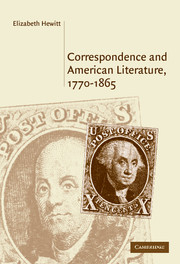5 - Dickinson's lyrical letters
Published online by Cambridge University Press: 22 September 2009
Summary
In 1891, five years after her death, Thomas Wentworth Higginson published in the Atlantic Monthly a selection of letters he had received from Emily Dickinson in the early years of their twenty-four-year correspondence. He justifies the publication of the letters, which he claims to do with “much reluctance,” by offering them not as an extension of Dickinson's body of work, but as documents that provide clues to the life and mind of the “partially cracked poetess at Amherst”:
It seems to be the opinion of those who have examined her accessible correspondence most widely, that no other letters bring us quite so intimately near to the peculiar quality and aroma of her nature; and it has been urged upon me very strongly that her readers have the right to know something more of this gifted and most interesting woman.
Higginson proposes that Dickinson's epistolary writing is valuable insofar as it offers biographical revelation. Four years later, Mabel Loomis Todd (who compiled the first edition of Dickinson's letters) cites the revelatory quality of the poet's epistolary writing as the reason for her own reluctance to publish the poet's correspondence: “It was with something almost like dread that I approached the task of arranging these letters, lest the deep revelations of a peculiarly shy inner life might so pervade them that in true loyalty to their writer none could be publicly used.”
- Type
- Chapter
- Information
- Correspondence and American Literature, 1770–1865 , pp. 142 - 172Publisher: Cambridge University PressPrint publication year: 2004

